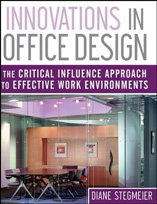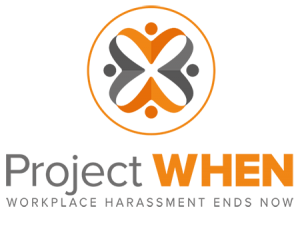Critical Influences™: Core Values
What are organizational core values?
 Just like the vision and mission statements, organizational core values should never be too far out of mind in any business. Oftentimes, these three are perceived as interchangeable, but they are not.
Just like the vision and mission statements, organizational core values should never be too far out of mind in any business. Oftentimes, these three are perceived as interchangeable, but they are not.
Rather than being interchangeable principles, these are interrelated factors that work together to guide an organization to its goals. If the company’s vision is the “why” and their mission is the “what”, the core values are the “how.”
As one of the foundations of an organization, the core values define what a company believes in and what sets them apart from competitors. They serve as guidelines that all employees—including executives and leaders—are expected to follow in their daily activities.

As part of the 15 Critical Influences™, this page on Organizational Core Values is integrated with actual content from the book Innovations in Office Design: The Critical Influence Approach to Effective Work Environments™ by SCG Founder Diane Stegmeier.
How corporate core values can guide your organization through change
Acting as a list of non-negotiable principles, the core values articulate what should be considered when managing workplace change. A company’s core values can serve as a theme for unity in order to kick off and follow through with a change initiative.
A clear set of company values creates a lasting impression on customers and employees alike, since it communicates how the business intends to carry out its mission even in the face of major changes.
However, core values are too often left on the shelf to collect dust, and components of a workplace change initiative end up not reflecting the original fundamentals a company was founded upon. There is a fine line between establishing these values just to create a positive image on the clientele and actually taking it to heart. The former, without practice, renders core values hollow and meaningless, making it difficult to foster trust between the organization, employees, and customers.
The interrelatedness of core values with other Critical Influences™
As customers ourselves, we have all heard the phrase “the customer is always right,” but somehow, there are still instances where our expectations fail to be met. We hear specific promises but experience a different treatment. Neil Young said it best, “you pay for this, but they give you that.” Perhaps the phrase “Rust Never Sleeps” has something to do with how an organization communicates its core values to employees.
Stegmeier Consulting Group worked with a firm that had a core principle stating this: “We give the customer the benefit of the doubt.” A very promising statement that gives a sense of security to the customer.
However, things turned upside down when a newly hired middle manager who supervises the call center staff started to prohibit shipping replacements for customers who reported missing items from their orders. As it turned out, he was doing this in the name of protecting company profitability.
Instead of solving concerns in a diplomatic way, customers were accused of not articulating their requirements clearly which made them feel that they were being called a liar. Understandably, this behavior left consumers aggravated.
This case shows the incongruence of the firm’s core values with the other Critical Influence™ of performance management. Since the manager in question was driven to perfect a quantitative measure of maintaining profitability, the core value pertaining to giving consumers the benefit of the doubt got lost in the process. What lacked in the measurement system of the manager’s performance was a qualitative metric of customer satisfaction adherent to the company’s core values.
SCG recognized that the organization’s values may have been possibly overlooked in the orientation of newly hired employees. To solve this outstanding problem, the team worked with senior leadership and human resources managers in reintroducing the core values to employees by facilitating exercises that would help them learn how to apply each value to the company’s daily operations.
How organizational core values can be leveraged to overcome resistance to change
Some change initiatives can be met with resistance, especially if the core values are not communicated properly. How do organizational core values relate to the implementation of a new workplace design?
Picture a company who is considering moving managers out of private offices into an open-space plan. Managers who are losing their private workspace may negate this initiative and say that its implementation would endanger the customers’ confidential data.
If the company has established values such as “working as a team to provide customer excellence” or “all employees are respected equally,” these can be leveraged to gain acceptance of the new workplace strategy.
When team members are asked to embody these values, there is no need to worry about endangering confidential customer information. The managers just need to be reminded that every employee has been thoroughly vetted in the hiring process and that there should be an understanding of trust as everyone is working towards a common goal of providing the best customer experience.
 In this case, the core values play a pivotal role in facilitating the success of transitioning into a more open and collaborative work environment by turning employee resistance into an active application of organizational values.
In this case, the core values play a pivotal role in facilitating the success of transitioning into a more open and collaborative work environment by turning employee resistance into an active application of organizational values.
Another great example of the relationship between core values and the physical workspace can be derived from an interview SCG had with Hal Adler, former president of the Great Places to Work® Institute.
Surprisingly, even among Great Places® organizations, examples are relatively few of those that strategically and proactively leverage the physical work environment. Adler did share one example, however, of a Great Places® enterprise that constructed its office and conference room walls out of glass to reflect its core values of openness, transparency, and communication.
Another of the institute’s award winners, for which environmental sensitivity is a priority of their value system, became one of the first LEED facilities in the United States. The elements included in its offices reflected a commitment to renewable energy.
According to Adler, these “subtle decisions play to the reinforcement of who they are”; and by and large, the expectation is that the work environment is a safe place, has the tools and information employees need, and contributes to the employees’ ability to get their work done by staying out of their way.
Reintroducing your core values as a pivotal aspect of change management
Your core values play a much more important role in managing workplace change initiatives than you might realize. These values may just need some dusting off and reintroducing to your team in an effective way.
If this sounds like something your organization needs, connect with Stegmeier Consulting Group by filling out the form below.



